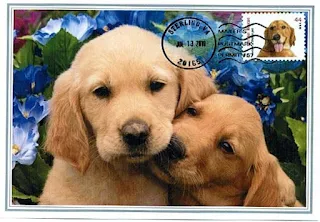How about men with Order of the Dragon induction?
"Central Sighişoara has preserved in an exemplary way the features of a small medieval fortified city; it has been listed by the UNESCO as a World Heritage Site. Each year, a Medieval Festival takes place in the old citadel in July.
Sighişoara is considered to be the most beautiful and well preserved inhabited citadel in Europe,[citation needed] with an authentic medieval architecture. In Eastern Europe, Sighişoara is one of the few fortified towns which are still inhabited. The town is made up of two parts. The medieval stronghold was built on top of a hill and is known as the "Citadel" (Cetate).The lower town lies in the valley of Târnava Mare river."
This 1997 series of stamps from Romania, with beautiful drawings, commemorates 550 years from the death of Vlad II Dracul."Vlad II (c. 1390 – December 1447), known as Vlad Dracul ("Vlad the Dragon"), was a voivode (duke) of Wallachia. He reigned from 1436 to 1442, and again from 1443 to 1447. He was the father of Mircea II,Vlad Călugărul, Vlad Ţepeş (also known as "Vlad the Impaler"), and Radu the Handsome.
All four of his sons would at one time rule Wallachia. Vlad Tepes would go on to become one of the most notorious rulers in history."
http://en.wikipedia.org/wiki/Sighisoara
Sighisoara, Romania - maximum cards (notice the different pictorial postmarks).
Sighisoara, Romania - maximum cards (notice the different pictorial postmarks).
Order of the Dragon inductees include both Vlad II Dracul and his son, Vlad III Dracula.
"On December 12, 1408, following the Battle of Dobor[5][6][7] in which he slaughtered most of Bosnia's nobility, many who had fought the Turks [8] Sigismund and his queen, Barbara of Celje, founded the league known today as the Order of the Dragon.[9][10] Its statutes, written in Latin, call it a society (societas) whose members carry the signum draconis (see below), but assign no name to it. Contemporary records, however, refer to it by a variety of similar if unofficial names, such as Gesellschaft mit dem Trakchen, Divisa seu Societate Draconica, Societate Draconica seu Draconistarum and Fraternitas Draconum.[11] It was to some extent modelled after the earlier Hungarian monarchical order, the Order of St. George (Societas militae Sancti Georgii), founded by King Carol Robert of Anjou in 1318.[10] It likewise adopted St. George as its patron saint, whose legendary defeat of a dragon was used as a symbol for the military and religious ethos of the order."
The edict of 1408 describes two insignia to be worn by members of the Order:
- " ... we and the faithful barons and magnates of our kingdom shall bear and have, and do choose and agree to wear and bear, in the manner of society, the sign or effigy of the Dragon incurved into the form of a circle, its tail winding around its neck, divided through the middle of its back along its length from the top of its head right to the tip of its tail, with blood [forming] a red cross flowing out into the interior of the cleft by a white crack, untouched by blood, just as and in the same way that those who fight under the banner of the glorious martyr St George are accustomed to bear a red cross on a white field ..." [13]
The dragon described here, with its tail coiled around its neck, bears comparison to the ouroboros.[citation needed] On the back of the dragon, from the base of the neck to the tail, is the Red Cross of Saint George, with the entire image on an argent field. The Order's dragon emblem has not survived in any original form, but it has been referenced on coins, art, and in writing."
Notice the Dragon on the outer, upper margin of this medieval saddle.
A fresco showing St. George slaying the Dragon, from the Moldovita Monastery, Romania - UNESCO World Heritage Site (Painted Monasteries of Bucovina/Moldova/Romania):
"The Moldoviţa Monastery (Romanian: Mânăstirea Moldoviţa) is a Romanian Orthodox monastery situated in the commune of Vatra Moldoviţei, Suceava County, Moldavia, Romania. The Monastery of Moldoviţa was built in 1532 by Petru Rareş, who was Stefan the Great's illegitimate son. It was founded as a protective barrier against the Muslim Ottoman conquerors from the East.".
"Stephen the Great, the King of Romania [MY NOTE: Prince/Voivode of Moldavia, actually] from 1457 until his death in 1504, fought 36 battles against the Ottoman Empire, winning 34 of them [MY NOTE: not too shabby :) ]. He was very religious and built churches after many victories. Stephen's illegitimate son, Petru Rareş, who ruled Romania [MY NOTE: Prince/Voivode of Moldavia, actually] from 1527-1538 and again from 1541-1546, promoted a new vision for Bukovina churches. He commissioned artists to cover the interiors and exteriors with elaborate frescoes (portraits of saints and prophets, scenes from the life of Jesus).
The best preserved are the monasteries in the towns of Suceviţa, Moldoviţa, Voroneţ, Humor, Suceava, Pătrăuţi, and Probota. Seven of them--including the Monastery of Moldoviţa--were placed on UNESCO World Heritage list in 1993."=======================
Happy PFF (Postcard Friendship Friday)!
Please visit: http://thebestheartsarecrunchy.blogspot.com/












